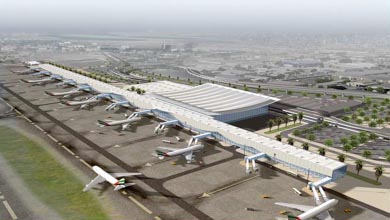Glossary of Aviation Terms | International Airport
International Airport | Paramount Business Jets
International airports are exactly what they sound like. They are airports that are used for the purpose of bringing flights in and out of a country. Most international airports in the United States are class B airports like JFK International Airport, but there are airports that serve smaller but widely traveled areas like Daytona Beach International Airport, which is a class C airport. An international airport can handle a wide range of traffic, from hundreds to thousands of flights in and out of its airport every day. They employ many types of agencies to ensure the safety and security of that airport and serve as a gateway into a different cultural experience. However, in order to fly in and out of an international airport, you don’t need to be flying internationally. For instance, you can fly from JFK International Airport in Long Island, NY and go to Logan International Airport in Boston, MA and never once leave the country. This is because international airports serve both domestic and international flights.

In parts of the world and in small countries, an international airport may be the only kind of airport existing due to the size and travel volume of that country and thus has less meaning to that country. There can be international airports that only have international flights or can serve as a base for what is called a limited international airport. This is when an airport handles international flights but, due to its location or size, becomes restricted to short-haul flights. An example of a limited international airport would be a military airport base.
Identifying an international airport can be relatively easy because most of them retain the word "international" in their name, like Logan International Airport. However, there are cases in which major airports do not have the word international incorporated into their name, like London Heathrow Airport. In most cases, an international airport will start off as a domestic airport with little to no air traffic and, over time, with a growth in population around it, will become international. It usually takes a while for a domestic airport to become international, and such was the case with Daytona Beach International Airport. Starting off as a domestic class E airport in the late 1920s, it grew into a larger class C by the 1960s and became an international airport in the early 1990s.

International airports not only serve the purpose of international or intercontinental travel but can also serve as a base for larger airlines. Due to the frequently large size of an international airport, airlines like Delta use an international airport like Atlanta International, GA as their home base. Also, passengers who have connecting flights most of the time will use international airports as a hub to get from one plane to another. Due to the volume of travel in and out of most international airports, it is necessary to keep a watchful eye on their occupants. In the United States, the Transportation Security Agency, or TSA, employs thousands of people to check and re-check luggage, people, and cargo for security threats. As well as the TSA, international airports also have customs, where belongings are checked for illegal or unacceptable items as determined by that country. Passengers connecting to domestic flights from international flights generally must take their checked luggage through customs and re-check it at the domestic airline counter, requiring extra time in the process.
Explore More Aviation Terminology
- Approach light system | Paramount Business Jets
- Aircraft | Paramount Business Jets
- Part 91 | Paramount Business Jets
- Ceiling | Paramount Business Jets
- Heliport | Paramount Business Jets
- Carbon Offset | Paramount Business Jets
- Approach (Departure) Control | Paramount Business Jets
- Charter Operator | Paramount Business Jets
- Class A Airspace | Paramount Business Jets
